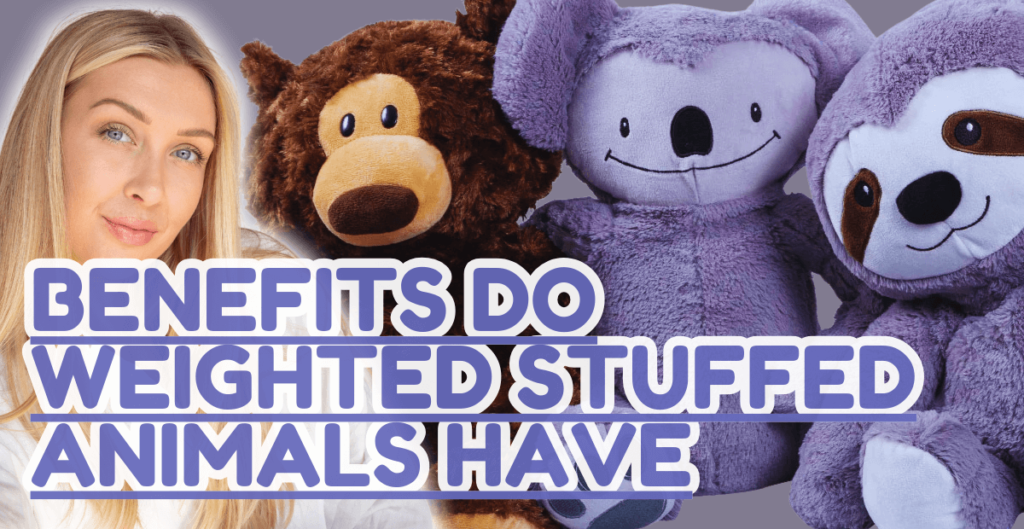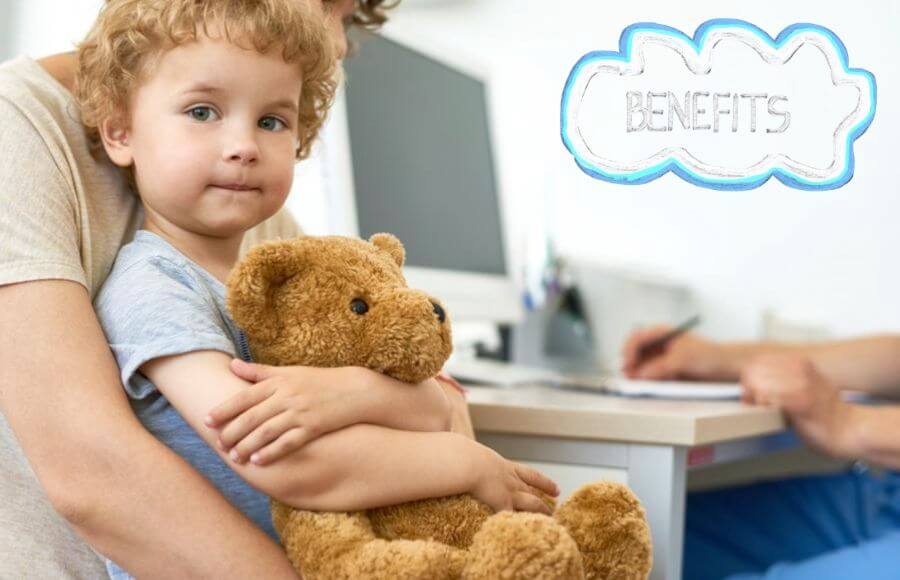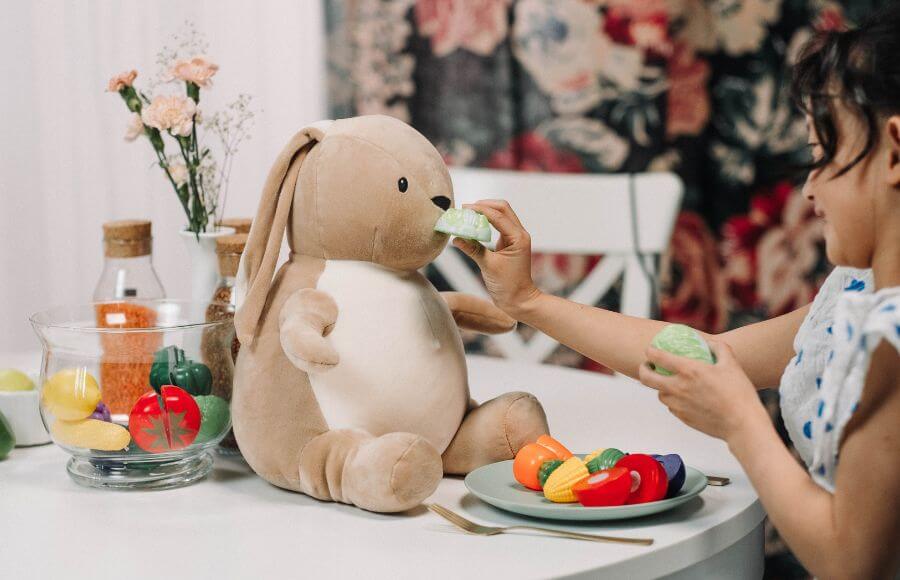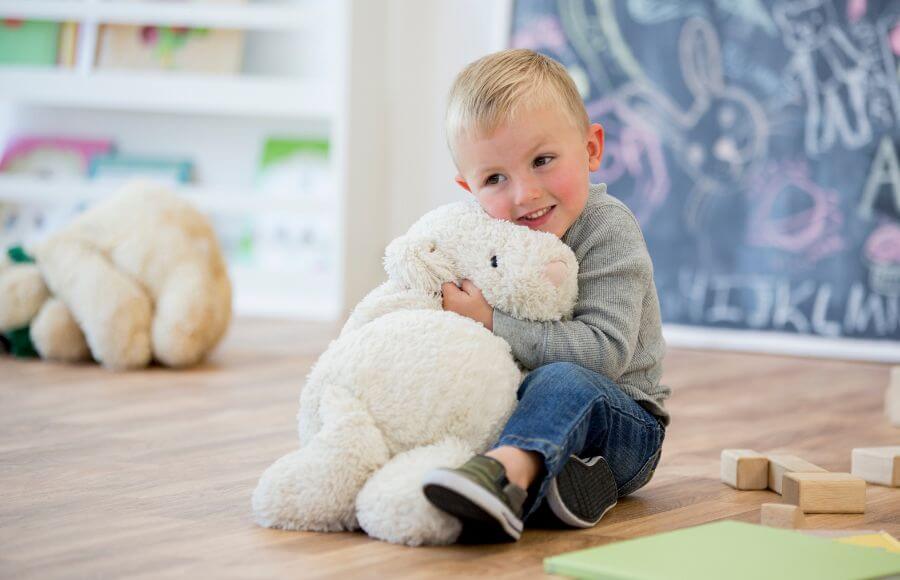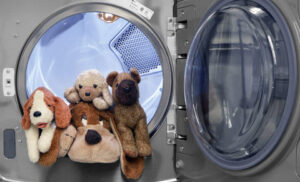Blog
Benefits Of Weighted Stuffed Animals
Weighted stuffed animals are more than just soft, cuddly toys—they serve a therapeutic purpose. By applying gentle, even pressure, they help reduce anxiety, improve focus, and promote better sleep. In this article, we’ll explain the Benefits of Weighted Stuffed Animals and how they can enhance emotional and physical well-being.
🧸 The Benefits of Weighted Stuffed Animals: Comfort, Calm, and More!
What Are Weighted Stuffed Animals?
Weighted stuffed animals are plush toys filled with materials like glass beads, poly pellets, or sand to give them extra weight. Unlike traditional, light, and fluffy stuffed animals, these weighted plush animals provide a comforting pressure when hugged or placed on the body. They come in various sizes and designs, from cute teddy bears and cats to dinosaurs and fantasy creatures. Some even come as weighted scented stuffed animals, combining the calming effects of weight and soothing scents like lavender. At the same time, they look like regular toys and their added weight offers therapeutic benefits, making them popular among children and adults.
What Benefits Do Weighted Stuffed Animals Have?
Weighted stuffed animals are more than just cuddly toys—they offer a variety of emotional and physical benefits for both kids and adults. With their added weight, these weighted plushies provide deep comfort and support, helping to reduce anxiety, improve sleep, and promote relaxation. They function similarly to weighted blankets, applying gentle pressure that calms the nervous system. Whether a small teddy or a large weighted stuffed animal, these plush toys have become popular comfort objects for people of all ages. In this article, we’ll explore everything you need to know about the benefits of weighted stuffed animals and how they can improve overall well-being.
Why Are Weighted Stuffed Animals Heavy
The extra weight in these plushies isn’t just for show—it serves a specific therapeutic purpose. The heaviness is designed to provide Deep Pressure Stimulation (DPS), a technique that applies gentle, even pressure to the body. Like being hugged or swaddled, this pressure calms the nervous system and promotes relaxation. The sensation triggers the release of serotonin and dopamine. These chemicals improve mood, reduce stress, and even boost the release of oxytocin, the “love hormone” that fosters feelings of connection and security.
Read More: Best Stuffed Animal For Girlfriend
What Materials Are Used to Give Stuffed Animals Weight and How Heavy Should They Be?
Weighted stuffed animals are filled with materials designed to add weight while ensuring comfort and safety. Let’s explore the common materials used and how to choose the right weight for your needs.
Common Materials Used To Add Weight
- Glass Beads
Weighted plush animals often use glass beads for their smooth texture and even weight distribution.- Advantages: Durable, non-toxic, and hypoallergenic. They help maintain the softness of the toy while adding weight.
- Disadvantages: Glass beads can be more expensive and may feel firm to those who prefer softer plushies.
- Poly Pellets
Poly pellets are small plastic beads commonly used in weighted plushies.- Advantages: Affordable, easy to clean, and washable.
- Disadvantages: Less eco-friendly and may spill if the plush tears.
- Sand
Sand is a natural and heavy material often used in DIY weighted stuffed animals.- Advantages: Inexpensive and adds dense weight.
- Disadvantages: Can clump when wet and may cause messes if the toy tears.
- Rice or Grains
Some weighted plush animals are filled with natural materials like rice or barley.- Advantages: Eco-friendly and offers a unique texture.
- Disadvantages: Not washable and may attract pests or develop mold if exposed to moisture.
How Heavy Should a Weighted Stuffed Animal Be?
Choosing the right weight is essential for comfort and effectiveness.
- Recommended Weights by Age and Size
- General Rule: A weighted stuffed animal should weigh 5-10% of the user’s body weight.
- For Children: Start with lighter weights (1-3 pounds) for safety and comfort.
- For Adults: Heavier weighted plushies (4-6 pounds) can offer deeper pressure for relaxation and stress relief.
- Safety Guidelines
- Always supervise young children, especially those under 3 years old.
- Avoid using large-weight stuffed animals for infants, as they can pose a suffocation risk.
- Check regularly for wear and tear to prevent leaks.
- Choosing the Right Weight for Specific Needs
- Anxiety Relief: Medium weight provides enough pressure to calm the nervous system without being overwhelming.
- Sleep Improvement: Heavier stuffed animals can simulate being hugged or swaddled for better sleep.
- Sensory Processing Needs: Adjust the weight based on personal comfort and therapeutic recommendations.
Benefits of Weighted Stuffed Animals for Adults: Comfort, Calm, and Mental Health Support
Weighted stuffed animals aren’t just for kids—they also offer real benefits for adults! These plush companions provide comfort, help reduce stress, and support mental health. In this chapter, we’ll answer the most frequently asked questions about the benefits of weighted stuffed animals for adults.
We’ll explore how they promote relaxation, improve sleep, and positively impact emotional well-being. From learning what skills adults can gain from stuffed animals to understanding how weighted stuffed animals help with depression and anxiety, we’ll cover it all. Whether looking for a way to relax after a long day or seeking emotional support, weighted stuffed animals can make a big difference in your daily life.
How to Use a Weighted Plush For Anxiety
Weighted stuffed animals are an effective tool for managing anxiety, offering comfort through gentle, consistent pressure. Here’s how to incorporate them into your daily life for maximum benefit:
Best Practices for Daily Use
Use your weighted plush during moments of stress or anxiety. Whether working, studying, or relaxing, placing the stuffed animal on your lap or hugging it can help calm your nerves. Deep pressure stimulation helps reduce anxiety by signaling the brain to relax.
Incorporating into Bedtime Routines
Weighted stuffed animals are great for improving sleep quality. To use them effectively, include the plush in your bedtime routine by cuddling it while reading or placing it on your chest to help you unwind. The gentle weight promotes a sense of security, allowing you to fall asleep faster and longer.
Complementing Other Anxiety-Reducing Strategies
Combine your weighted plush with relaxation techniques, such as deep breathing, meditation, or mindfulness exercises. It can also be a comforting tool during therapy sessions or when practicing grounding, offering emotional and physical support.
How to Wash a Weighted Stuffed Animal
Keeping your weighted stuffed animal clean is essential for its durability and safety. Here’s how to wash and care for it properly:
Washing: Hand-Washing vs. Machine-Washing
- Hand-Washing: This is the safest method. Fill a basin with cold water and mild detergent, gently submerging the plush. Avoid scrubbing too hard, as it can damage the fabric or internal weights.
- Machine-Washing: Only machine-wash if the manufacturer’s instructions allow. Use a gentle cycle with cold water and place the stuffed animal in a laundry bag to protect it from tearing.
Best Detergents and Cleaning Techniques
Use a mild, fragrance-free detergent to avoid irritating sensitive skin. Avoid bleach or harsh chemicals, which can degrade the fabric and affect the stuffing.
Drying: Air-Drying Methods
After washing, gently squeeze out excess water without wringing the plush. Lay it flat on a clean towel in a well-ventilated area. Avoid direct sunlight, which can fade the fabric.
Avoiding Damage to Internal Materials
Do not tumble dry, as the heat can damage the internal weights, especially if the plush is filled with glass beads or poly pellets. Ensure it’s scorched before using it to prevent mold growth.
Tips for Long-Term Care
Spot-clean minor stains between washes to reduce the need for frequent full washes. Regularly inspect for signs of wear, especially at seams, to prevent leaks.
Read More: Popular Stuffed Animals
FAQ
What Skills Can We Learn From Stuffed Animals?
Stuffed animals are a captive audience for your young one to read to! Your young one may utilize those newly-acquired linguistic abilities to test their reading comprehension! And we’ve found the right book to recommend; Hooray, Jeremy! You Did It! It’s about a child’s first milestones and features 1 of 5 sidekicks that we sell plush toys!
Also, As your youngster learns to communicate more and more, their stuffed companion makes for a terrific conversationalist!
And these imagined talks help tiny ones acquire the courage to keep talking and create empathy for others.
Do Teddy Bears Help With Loneliness?
Research suggests that stuffed animals may help ease adults’ stress in the same way they benefit youngsters. Sleeping with a plush animal might assist with loneliness, quieting those midnight thoughts that sometimes seem overpowering. Look no further if you’re seeking methods to handle anxiety and tension. Grab yourself a lifetime companion from the plushie selection at I Heart Guts.
Plush toys may relieve anxiety naturally by delivering a feeling of reassurance. Primarily during times of transition, stuffed animals may deliver a consistent feeling of friendship since you know the toy will be there at the end of the day. They help soothe loneliness, which means you can never have too many. Three’s a crowd, so grab your plush organs in pairs.
Can Stuffed Animals Help With Stress?
While you want comfort, there’s also the science behind why a blanket may help you feel tranquil. The weight and pressure of a weighted blanket stimulate your autonomic nervous system, the portion of your body that governs your fight-or-flight impulses. The pressure from a blanket may reduce your heart rate and breathing — similar to box breathing — and help you transition into sleep.
In our hunt for comfort before bed, Dr. Chris Winter, sleep expert, Sleep.com adviser, and author of “The Sleep Solution: Why Your Sleep Is Broken and How to Fix It,” feels the secret may be an unexpected sense: scent.
Smells move straight to the olfactory bulb in the brain. And that bulb is related to the amygdala and hippocampus, which manage our emotions and memory.
“Smell is such a powerful trigger of memory,” Winter explains. “And memories may assist make you emotionally comfortable while attempting to sleep.”
You grab that teddy bear because it contains a familiar fragrance from childhood or your previous night’s sleep.
Do Stuffed Animals Make You Happier?
We know that stuffed animals have tremendous health advantages, but did you realize that stuffed animals may frequently have a similar impact on people? Yes! Stuffed animals have even been formally advised in psychotherapy for persons with PTSD, bipolar disorder, and other mental diseases.
Stuffed animals are also utilized in certain sorts of treatment. They may help us mourn and deal with tragedy. M. Rose Barlow, Professor of Psychology at Boise State University, states, “Animals, live or stuffed, may enhance therapy for both children and adults by offering a place to experience and express emotions, a sense of unconditional support, and grounding.”
The lesson of the tale is to cling to your childhood snuggle bug. They’re the OG friends with benefits. Mental health advantages that is—and let’s be serious, that’s a better snuggle partner than most of your exes.
Do Stuffed Animals Help With Depression?
Well, fluffies are deemed “comfort objects” for the simple reason that they can soothe children’s distress.
However, therapists employ stuffed animals as a treatment to assist in relieving patients who suffer from sorrow and loss for both children and adults.
Symptoms of detachment, dissociation, and disordered connection, may start from infancy. That’s why owning a stuffed toy can perform wonders to decrease the effect or assault of these mental disorders. It provides security, offers support, and rebuilds damaged attachment relationships.
Last but not least, cuddly toys help maintain your hormone levels regularly. Like cortisol, there are a significant number of hormones that govern our body’s normal functioning. A disruption in the amount might be a serious concern. We are having a stuffed toy may assist in preserving a person’s mental equilibrium by drawing more physical and psychologically steady surroundings.

